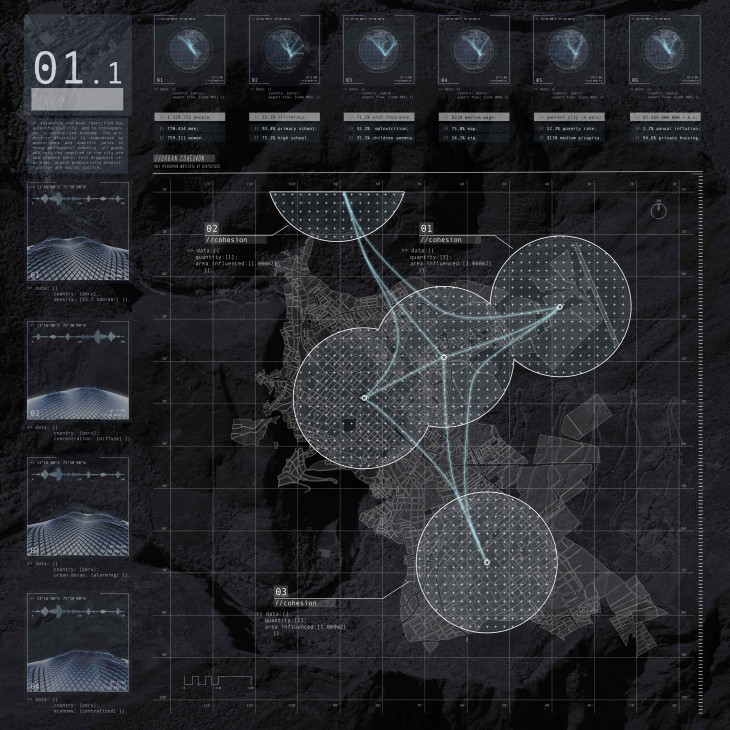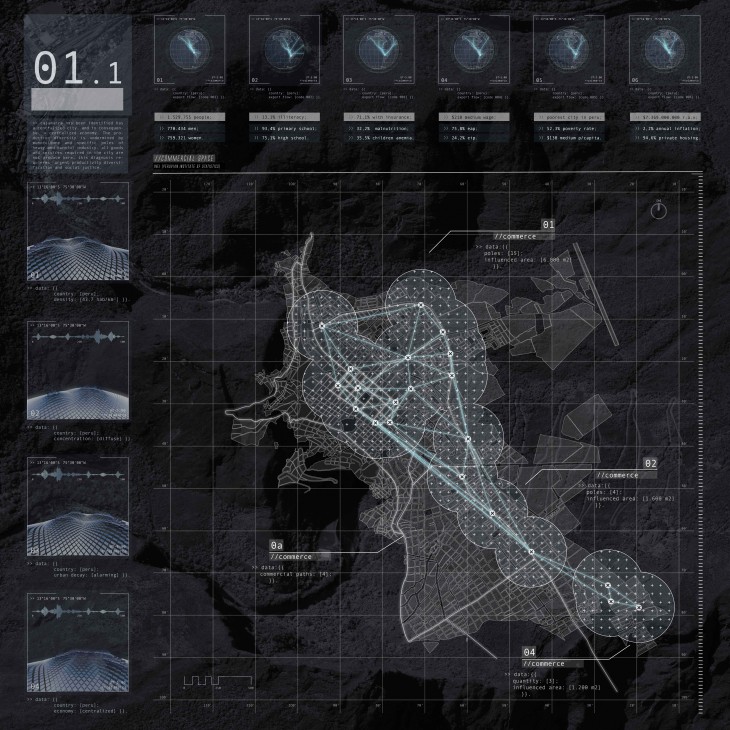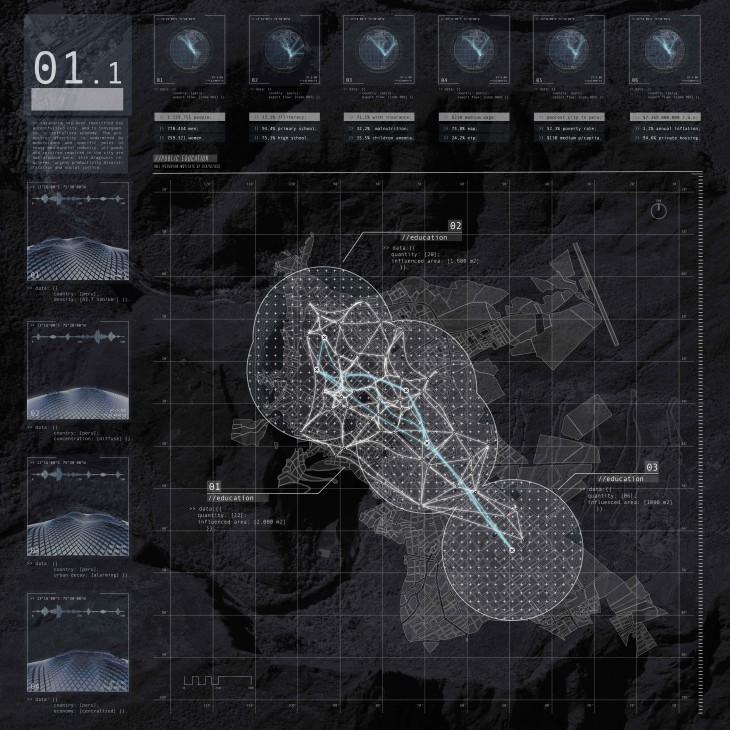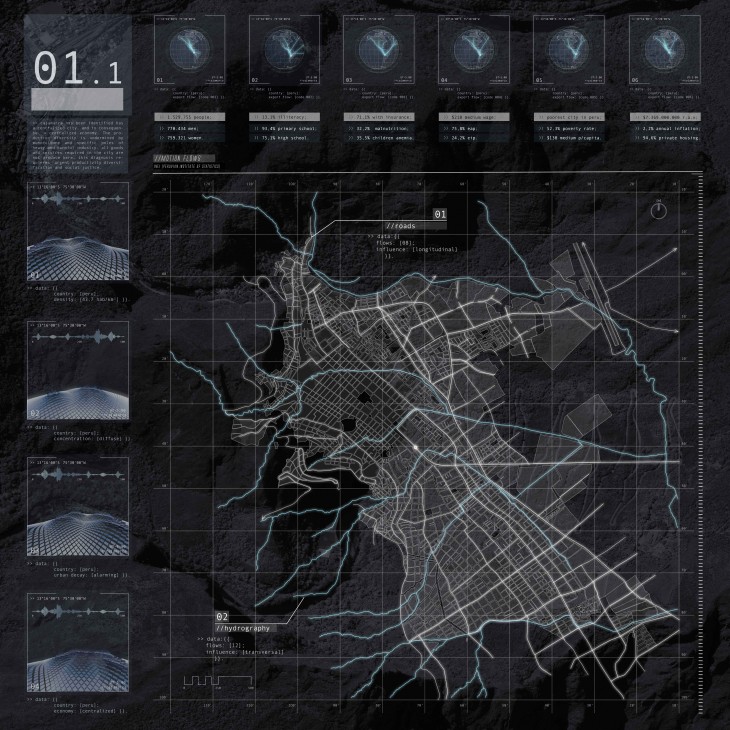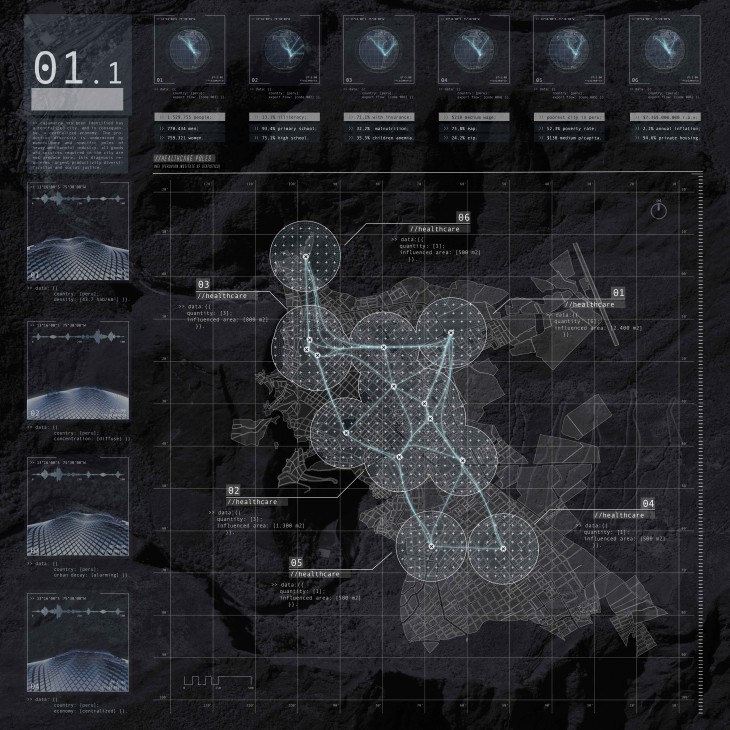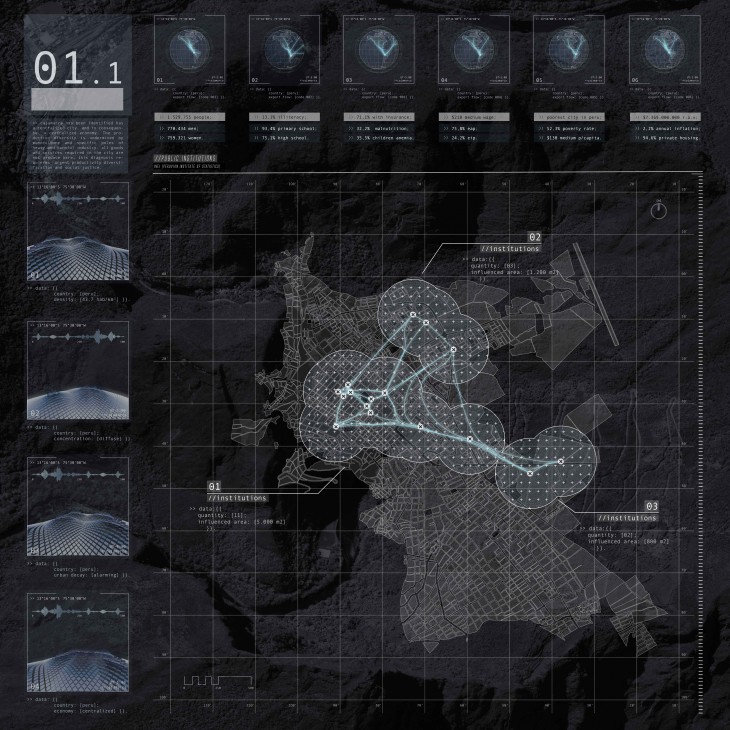> In the previous analysis, the economical production system of south american countries was found centralized and not diversified. This status definitely fosters social turmoil and despair distribution of wealthiness. In this stage, the analysis is based in the social repercussions that the current productive system carries within its functioning. In the following maps we can identify all the natural and social devastation that the extractive economies are currently producing .
[Extensive Deforestation]
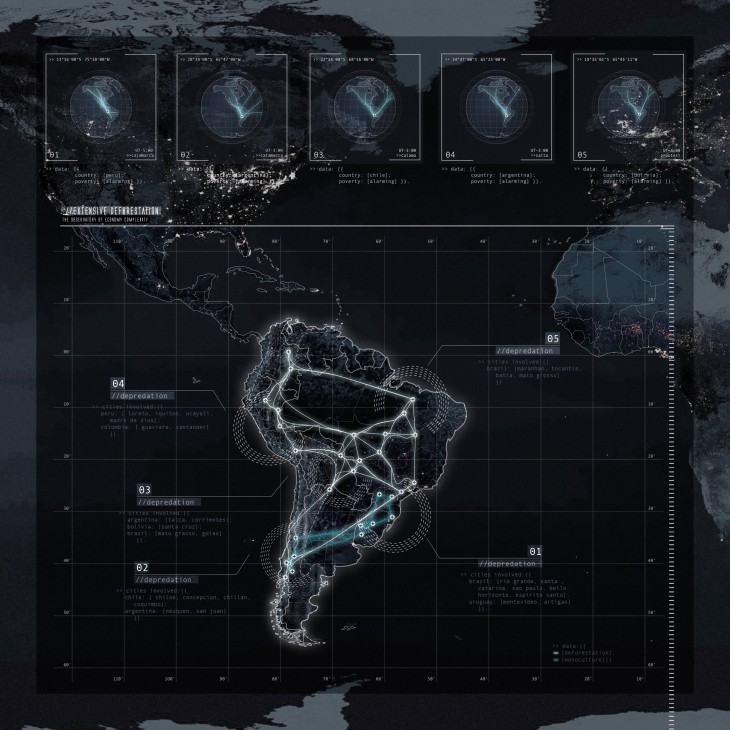
[Extractive Areas]
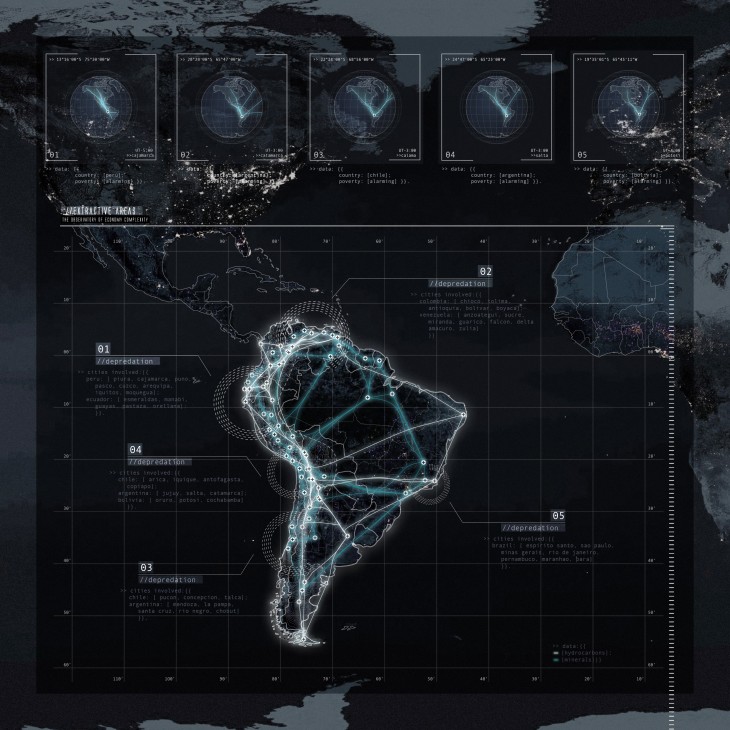
[High Pollution Areas]
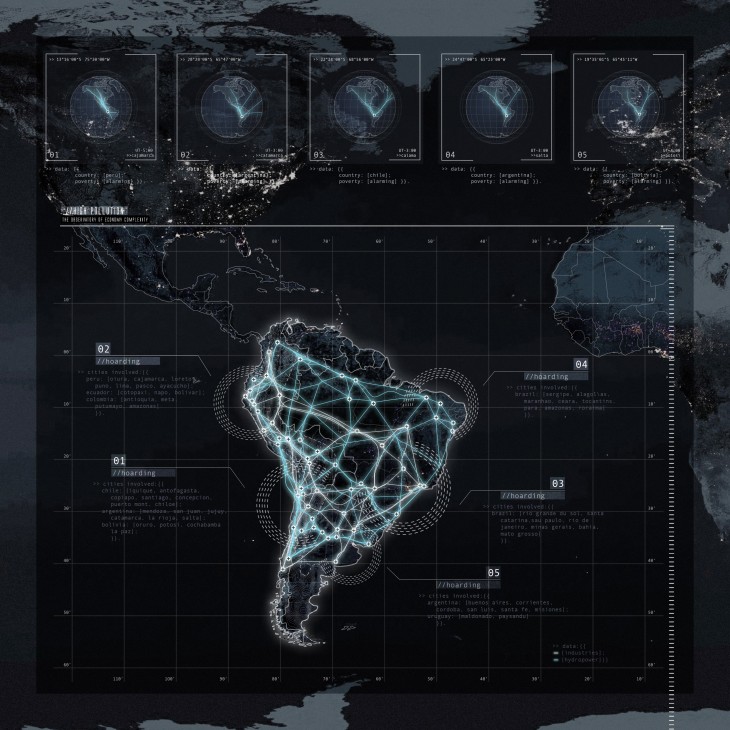
[Industrial Innuendo]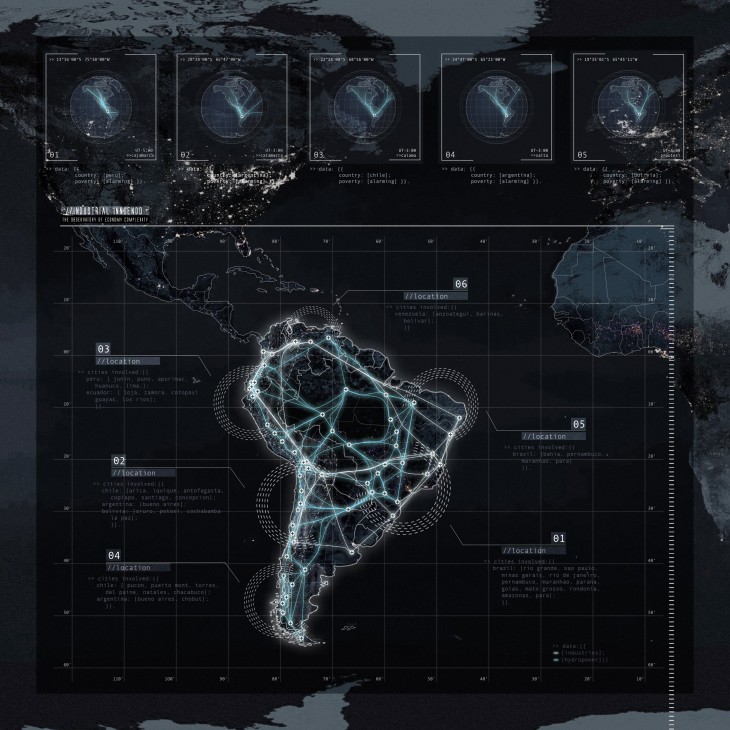
[Social Affections]
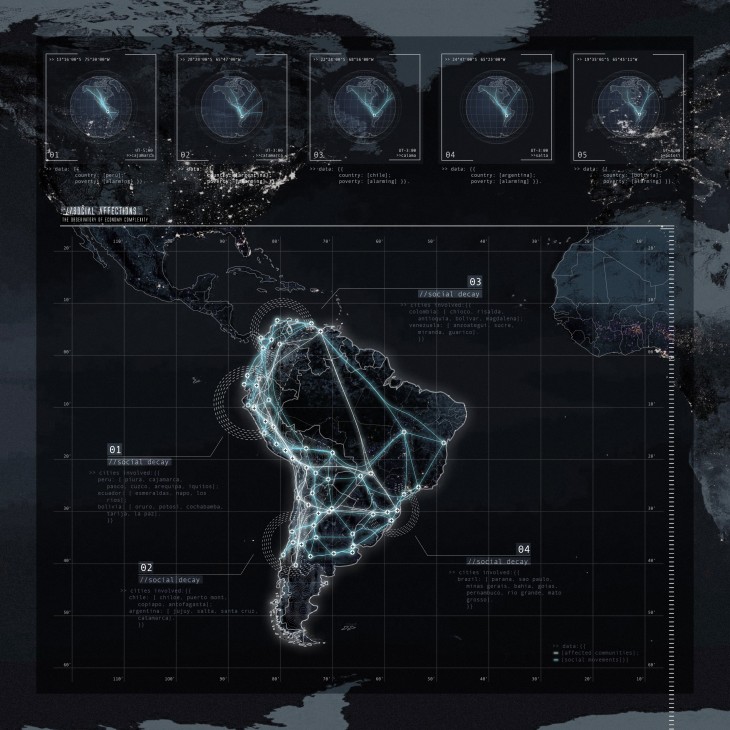
[Waterfront Depredation]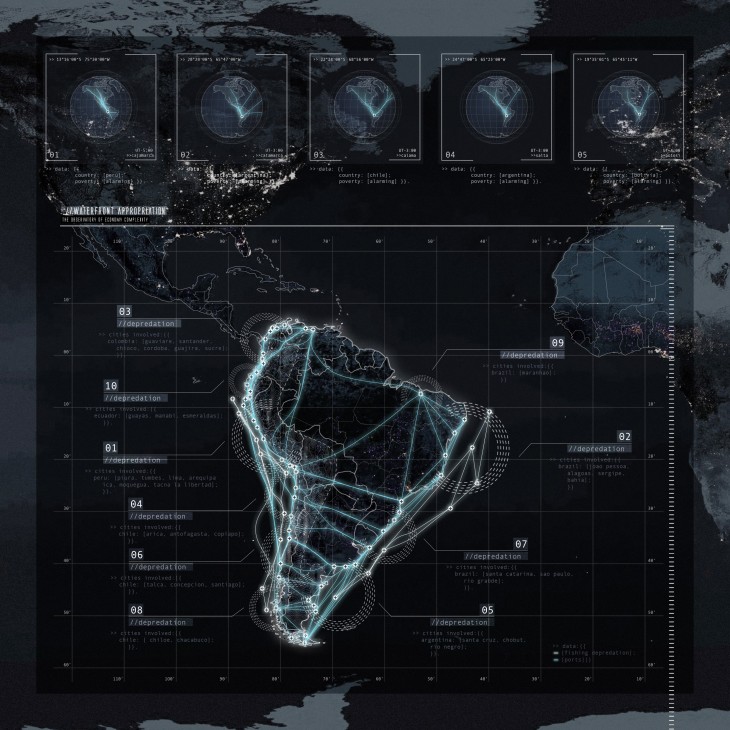
>After the analysis in the previous scale, I decided to shrink the scale of analysis in order to identify peculiarities and patterns within different cities that have the similar productive system.
>After revising the cities within south america, I can conclude that the extractive economies in cities like Catamarca and Salta(Argentina), Cajamarca(Peru), Potosi(Bolivia) and Calama(Chile) have enormous similarities in terms of demography, density, social affections and productive systems. This 5 cities have the possibility to diversify their economies, to take advantage of the different natural scenarios and the biodiversity that surround them. Nevertheless, they keep basing their economical model in extractive methods where less than the 5% of the overall population gets a real and tangible benefit. Their productive character is sleeping, has not awake yet.

>In this new stage of the research, I decided to make a further investigation on Cajamarca, located in Peru. This city actually has the biggest GDP incomes and at the same time, the highest rates of illiteracy, poverty, pollution and social decay. This contradictory values represent and show how an economical system based on commodities(extractive system) is actually undermining the development of the city and is causing tremendous social affections.
>In the next diagrams, I bring forward the analysis of the city based on the radius of influence by Hugh Barton. Where we can note the total urban disruption between public and private services within the city. Where the mine, situated in the north of the city is creating a huge pole of attraction, meanwhile the south of the city is in total decay.
[Agriculture Areas]
[Urban Cohesion]
[Commercial Nodes]
[Educational Institutions]
[Urban and Natural Flows]
[Healthcare Centers]
[Public Institutions]
[Public Scape]
[Urban Concentration]
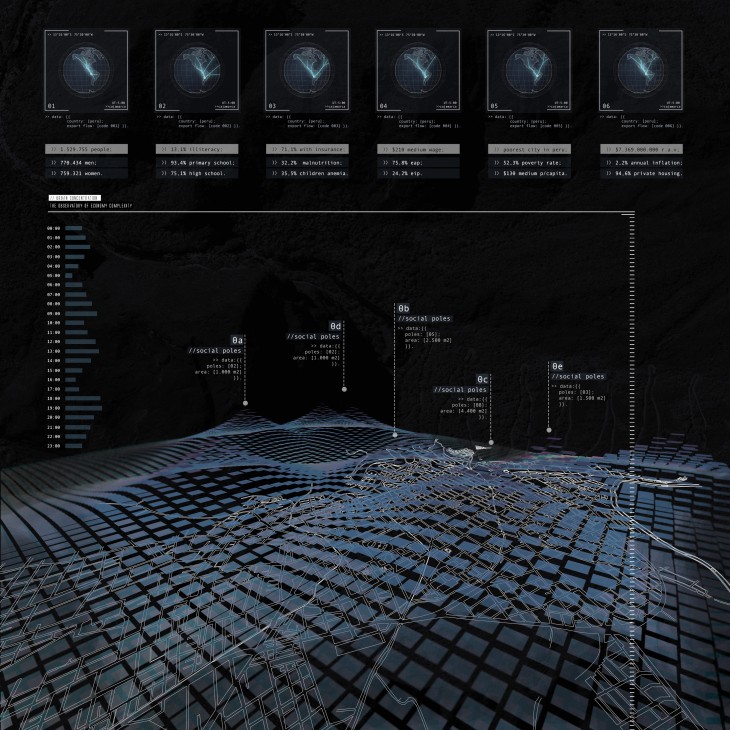
[Urban Decay]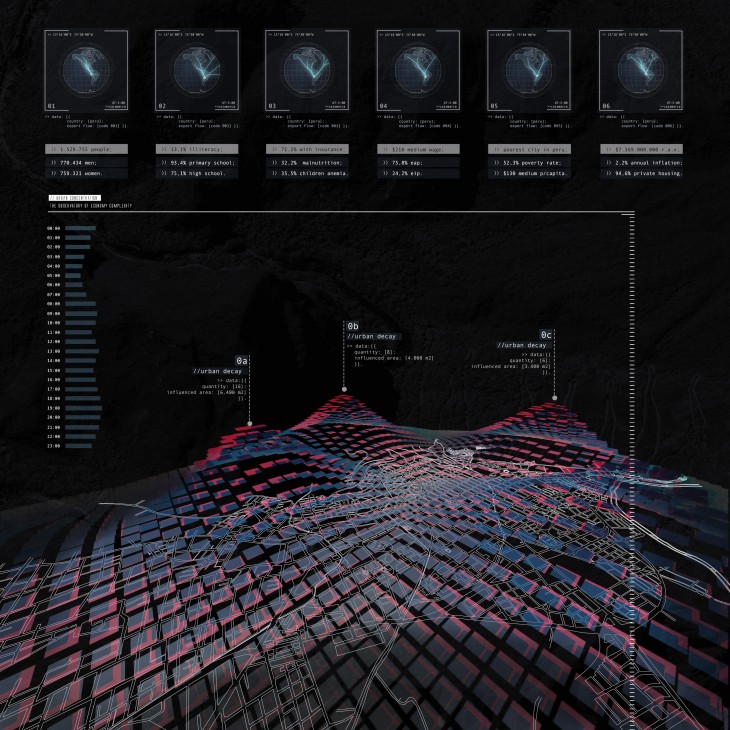
[Economical Concentration]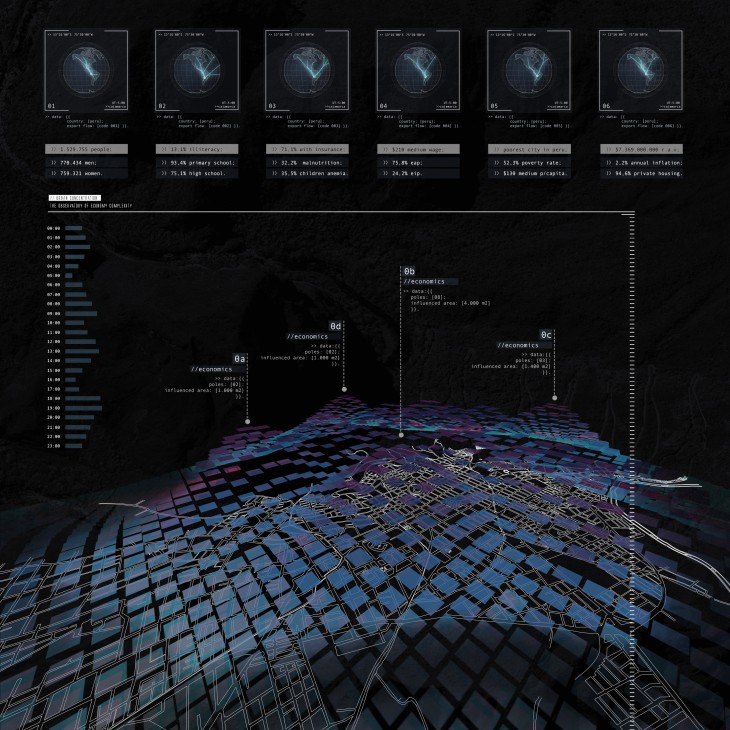
> After this analysis, I can conclude that the productive reconversion of this city is mandatory in order to achieve autonomy and to eliminate once and for all the social and productive contradictions. My project will take place in the scenario where the economical and productive system based on commodities is shift in a process of productive diversification. This new productive system will derive in a new protocol of “city/urbanism”. My project will consist in the development of a series of parametric proposals with four inputs that during the research I identified as key and vital in the city development: Economical, Political, Geomorphological and Singular.
>>[autonomy project][the paradigm of city architecture] is a project of IaaC, Institute for Advanced Architecture of Catalonia developed at the Master of Advanced Architecture MAA02 [2014-2016] by:
Studend: Diego Ramirez
Faculty: Vicente Guallart // Ruxandra Bratosin

